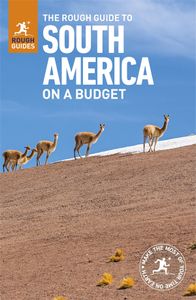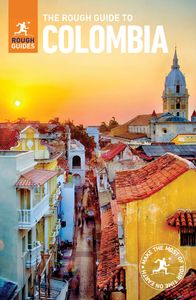What is the weather like in Colombia in July?
As touched on above, July sees Colombia experience varied weather conditions as a result of variations in altitude across its regions.
Andean region
July sees Colombia's Andean region in the dry season, with pleasant mild-to-warm temperatures lending themselves well to the likes of hiking and exploring cities.
Thanks to its altitude, Bogotá, the Colombian capital, is the one of the coolest destinations in the area.
Meanwhile Medellín, “City of Eternal Spring”, will be warmer, as revealed in our guide to the weather in Medellín in July. Expect temperatures to average around 24°C (75°F) — ideal for outdoor activities and exploring the surrounding Antioquia region.
Caribbean coast
Encompassing captivating Cartagena and Santa Marta, Colombia’s tropical Caribbean Coast is warm-to-hot in July.
July is also a dry time of year here, with clear skies and plenty of sun — perfect for blending beach days with, for example, immersing yourself in Cartagena’s cultural treasures.
Editor’s tip: find out more about the weather in Cartagena in July.
Pacific coast
While Colombia’s Pacific Coast is rainy around the year, July isn’t one of the wettest months around these parts.
Yes, it will be rainy and humid, but not nearly as extreme as it is in October, the rainiest month of the year, when rainfall usually exceeds 700 mm. For comparison, the driest Pacific Coast months — January and February — see 170-250 mm.
Editor’s tip: you can watch humpback whales along the Pacific Coast from July-November. More on that later…
Amazon region
The likes of Leticia in Colombia’s Amazon region experiences hot, humid, rainy weather around the year, and July is no exception.
Having said that, with an average of 240 mm (9.4 inches) of rain, July is one of the driest months in the region. For wider context, May sees in excess of 350 mm (13.8 inches), and June typically averages around 280 mm (11 inches).
Meanwhile, in August and September, rainfall in the Amazon region drops to an average of 220 mm (8.7 inches).
Insular region
In July, islands like San Andrés and Providencia in Colombia’s Insular region enjoy tropically warm weather, lots of sunshine, and occasional, short-lived showers.
July is also a shoulder season here, so you’ll get to go on great snorkelling trips and bliss on out beaches in less crowded conditions than seen during the prime peak season months around Christmas.
Keen to visit Colombia? Talk to our local Colombia experts to kick-start creating your dream trip.























